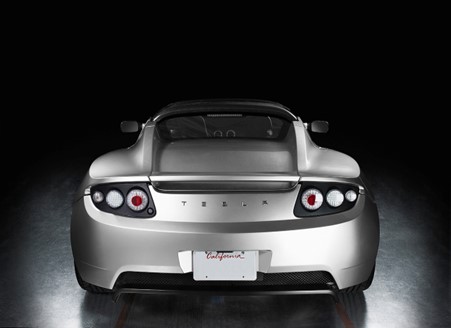Tesla Tales
5 July 2022
Last week a valued associate of Cardiff Business School drove me to a meeting in his brand new Tesla. I have only ever seen them in car parks and in traffic jams and so the only discernible difference that I could detect prior to my passenger experience was that it seemed to have a rather large screen inside…
My first challenge was how to open the door… the door handle is sort of secreted into the panel so that it lies flat, I imagine aiding aerodynamics and adding additional sleekness. Once I had been shown how to get inside (ahem), I saw the large screen that I had spotted from afar, but what I hadn’t appreciated was that there were NO internal dials and switches anywhere?! No dashboard whatsoever. No gauge for engine temperature, a dial to indicate how much fuel you have, how fast you were going, no dial that one that goes up and down depending on how much pressure you put on the accelerator (no idea what this is called, but after my Tesla experience, I can now, with confidence, state that this dial is indeed pointless).
The lack of dashboard might not have been news to most of you, but for me it was a revelation?! All of the driver information that you need was held in the big screen and most of it was only showed as and when you needed. The driver confirmed that the removal of all of the dials and gizmos made the driving experience really enjoyable. That it freed you up to just drive. And boy, could it motor. To demonstrate its prowess, the accelerator was applied and wowsers could it MOVE FAST! YIKES! (Don’t worry, I’m not turning into Jeremy Clarkson.. I’ll get onto lean now.)
A massive part of lean is visual management – I’ve written about this at length here and it comes up in many of my blogs– and when teaching visual management and how it plays such an important role within successful organisations, a good analogy that many of us lean practitioners use is that of driving a car. You need the information contained in the dashboard to guide and direct you, to show you how the car is performing and to indicate where there are problems and when things are running normally. In the same way, organisations need such a dashboard to let you know where you are in terms of your strategy, where the problems are occurring, helping you to navigate to your future strategic destination. How does the uber low key visual management of a Tesla fit into this analogy?
Interesting, very interesting… and I think that there is a lesson there which does actually lend itself to two of my three tests of good visual management. Is it S.U.S? Simple, Useful, Socialised. Only displaying the information when it needs to be brought to your attention (e.g. YOU ARE RUNNING OUT OF FUEL.. ahem sorry.. BATTERY) is definitely both extremely simple and useful.
The third test, “socialised”, did kind of happen too because I was mesmerised by the massive screen. There was this super cool feature where, because the Tesla has loads of sensors all over it, you can sort of see shadows of all of the cars and lorries around you on the road as the car is driving. Apparently everything is recorded too, making them supreme truth tellers in any accidents. Watch out everybody, when there’s a Tesla about they are seeing and recording EVERYTHING. Admittedly, I imagine that there is a period of acclimatisation when you start to drive a Tesla where it’s difficult to not be hypnotised by the shadow car movements, but I was assured that the Tesla’s level of automation makes it very difficult to crash!
So maybe that’s a better summary of a Tesla’s visual management strategy .. that the only visual management shown is when it is absolutely required, and when there are other quality systems in place to prevent failure, visual management is not necessary.
It’s certainly true that organisations can go far too far with visual management. The ability to communicate visually is indeed a language, and some organisations when implementing visual management jump to speaking “fluent French”, baffling and bewildering employees who have not yet been able to develop their visual language proficiency. The “elegant simplicity” TM *KERCHING* of the Tesla demonstrates that only critical information needs to be displayed in order to be effectively useful.
Whilst its true that the majority of organisations need better visual management mechanisms, there are definitely situations where too much information is produced that isn’t helpful or useful. Many organisations don’t listen to their weak signals and alerts, or indeed, don’t even have the systems set up to generate a signal or alert when some kind of action is required. So let’s be more Tesla, more elegant simplicity, have safety mechanisms in place that prevent failure, and try to develop systems that clearly express when action needs to be taken. The benefit of this approach is that when no response is required, we can simply bathe in the driving experience.
- Double Meanings
- Ticketing Masterplans
- When will it all end …
- Lifetime Loyalty and Taylor Swift
- Looking at Things Differently
- Networking Noodles
- Addicted to Truth
- Designs on Service Design
- The Multiple Joys of Universal Design
- Hungry Cultures
- Event Lean
- The Traffic Analogy
- Moving on Up
- Rosé Cava Revolution?
- Powerpoint Sneaky Lean
- Writing about Writing
- ChatGPT Response: Exploring the Art of Expression: Unveiling the Magic of Writing in the Style of Sarah Lethbridge
- Help to Grow Coldplay Style
- Caring IS Everything!
- Institutional Flapping
- “Just Do the Next Right Thing”
- Trust Thermoclines
- Organisational Tempo
- The Inaugural Lethbridge Customer Service Awards
- Vaccine Lean – The Dawn of the Water Spider
- The Queen and Lean
- Decisions, Decisions, Decisions
- Peaceful Protest
- Tesla Tales
- Back to Reality!
- Carrots, Sticks and Buckets of Time Tricks
- The Great Pandemic Pause
- Organisational Therapy
- Late Night Wordleing
- Vaccine Lean
- Chief Letters of Complaint Officer
- AMBAZING Accreditation!
- My Big Lean Head
- [Let us] Help [you] to Grow: Management
- The Love Island Blog
- October 2024 (1)
- September 2024 (1)
- July 2024 (2)
- June 2024 (1)
- May 2024 (1)
- March 2024 (1)
- February 2024 (2)
- December 2023 (2)
- October 2023 (2)
- September 2023 (1)
- July 2023 (3)
- June 2023 (1)
- May 2023 (1)
- April 2023 (1)
- March 2023 (1)
- February 2023 (1)
- January 2023 (1)
- November 2022 (1)
- October 2022 (2)
- August 2022 (2)
- July 2022 (1)
- May 2022 (2)
- April 2022 (1)
- February 2022 (1)
- January 2022 (1)
- December 2021 (2)
- November 2021 (1)
- October 2021 (1)
- September 2021 (1)
- August 2021 (1)
- July 2021 (1)
- May 2021 (2)
- April 2021 (1)
- March 2021 (1)
- January 2021 (1)
- December 2020 (1)
- October 2020 (3)
- August 2020 (1)
- June 2020 (2)
- April 2020 (1)
- March 2020 (1)
- February 2020 (1)
- December 2019 (2)
- October 2019 (1)
- September 2019 (1)
- August 2019 (1)
- July 2019 (1)
- June 2019 (1)
- February 2019 (3)
- October 2018 (1)
- September 2018 (1)
- March 2018 (10)
- April 2016 (1)
- January 2015 (3)
- July 2014 (9)
- September 2013 (1)
